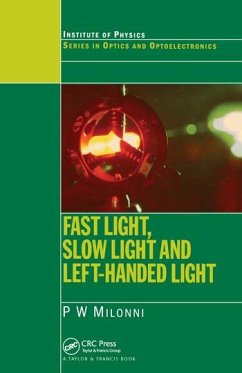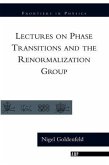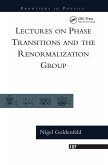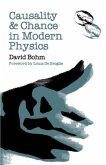The propagation of light in dispersive media is a subject of fundamental as well as practical importance. In recent years attention has focused in particular on how refractive index can vary with frequency in such a way that the group velocities of optical pulses can be much greater or much smaller than the speed of light in vacuum, or in which the refractive index can be negative. Treating these topics at an introductory to intermediate level, Fast Light, Slow Light and Left-Handed Light focuses on the basic theory and describes the significant experimental progress made during the past decade.
The book pays considerable attention to the fact that superluminal group velocities are not in conflict with special relativity and to the role of quantum effects in preventing superluminal communication and violations of Einstein causality. It also explores some of the basic physics at the opposite extreme of very slow group velocities as well as stopped and regenerated light, including the concepts of electromagnetically induced transparency and dark-state polaritons. Another very active aspect of the subject discussed concerns the possibility of designing metamaterials in which the refractive index can be negative and propagating light is left-handed in the sense that the phase and group velocities are in opposite directions. The last two chapters are an introduction to some of the basic theory and consequences of negative refractive index, with emphasis on the seminal work carried out since 2000. The possibility that "perfect" lenses can be made from negative-index metamaterials-which has been perhaps the most controversial aspect of the field-is introduced and discussed in some detail.
The book pays considerable attention to the fact that superluminal group velocities are not in conflict with special relativity and to the role of quantum effects in preventing superluminal communication and violations of Einstein causality. It also explores some of the basic physics at the opposite extreme of very slow group velocities as well as stopped and regenerated light, including the concepts of electromagnetically induced transparency and dark-state polaritons. Another very active aspect of the subject discussed concerns the possibility of designing metamaterials in which the refractive index can be negative and propagating light is left-handed in the sense that the phase and group velocities are in opposite directions. The last two chapters are an introduction to some of the basic theory and consequences of negative refractive index, with emphasis on the seminal work carried out since 2000. The possibility that "perfect" lenses can be made from negative-index metamaterials-which has been perhaps the most controversial aspect of the field-is introduced and discussed in some detail.
"This book explores three modern topics of electromagnetic field propagation ... which are perhaps the most studied aspects of the field but also the most controversial. ... The author explains ... many issues very clearly ... . He is one of those rare scientific authors who is able to describe difficult subjects in a very straightforward and pedagogical manner. This book belongs on the nearest shelf of anybody who is working in electromagnetics, at either optical or lower frequencies."
-Optics & Photonics News, June 2006
-Optics & Photonics News, June 2006








